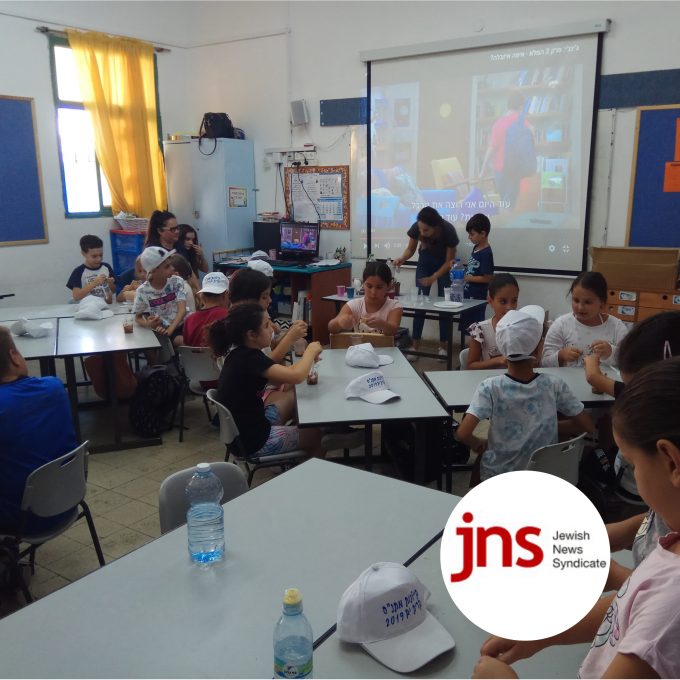25 September 2007 Music During the Holocaust World ORTs groundbreaking new website now on-line World ORT has produced the single most extensive on-line resource for researching music during, and associated with, the Holocaust Music During the Holocaust. By clicking on http://holocaustmusic.ort.org internet users can learn about a hitherto barely explored aspect of the Shoah with interactive maps, authoritative articles by some of the worlds leading experts, and most evocatively audio of 68 pieces of music including songs written in the camps and sung by survivors. It is a sister site to World ORTs widely acclaimed website Learning about the Holocaust through Art (http://art.holocaust-education.net/). World ORT Website Developer Sadler Johnson, who has spent two years managing the Music During the Holocaust project, said: It is the most substantive, comprehensive website on this subject currently available. World ORTs Music During the Holocaust website has been carefully designed to be easy to navigate and interesting for everyone, whether casual visitors, serious researchers or educationalists. There is information about music from the Nazi accession to power in 1933 until the end of World War Two from opera to German cabaret and Yiddish tango as well as music that has been produced in commemoration of the Holocaust since 1945. Audio includes previously unheard recordings made by the Jewish Historical Commission, in Munich, 1946, of survivors singing songs from the camps as well as those, also recorded in 1946, by research psychologist Dr David Boder, who interviewed survivors as they disembarked in New York. The music is placed in historical and cultural context with articles that cover some of the most important themes, people and places to provide a compelling introduction to this multi-dimensional subject, to offer resources to teachers, and to stimulate interest. Among the articles featured on the website are approximately 100 on people and 40 on places, such as ghettos and concentration camps. Of the 80 articles specifically on pieces of music, 68 are accompanied by audio of the work in question, Mr Johnson said. Violinists perform in the Kovno ghetto orchestra. United States Holocaust Memorial Museum, courtesy George Kadish and Zvi Kadushin. Visitors can find information efficiently by using the text search facility or browse using the interactive maps, hyperlinks embedded in the text and a special browsing facility that takes you to alphabetical lists of people and music. The website is very easy to use, Mr Johnson said. No matter how you find a particular topic, there is a window on the left of the screen that shows you how that topic fits in to the bigger picture. Research for the website has been led by historian Dr Shirli Gilbert, whose book, Music in the Holocaust: Confronting Life in the Nazi Ghettos and Camps, has received critical acclaim. The music and songs offer a unique insight into how people including those who did not survive understood what was happening to them at the time of the persecution and so offer a valuable addition to the testimonies of survivors after the fact, Dr Gilbert said. People are able to get a glimpse into what ordinary people like them experienced, she added. In place of the huge, faceless number of six million victims, music offers perhaps a more personal way into understanding the Holocaust. The Music During the Holocaust website has been made possible thanks to the vision and financial support of Clive Marks OBE and the Lord Ashdown Charitable Trust, as well as the Conference on Jewish Material Claims Against Germany and the Boltons, Samuel Sebba and Maurice Marks Charitable Trusts. Mr Marks, who has lectured for 30 years on music in the Third Reich and who also chaired the London College of Music for 15 years, said World ORTs project would help to fill what was perhaps the largest single gap in understanding the Holocaust. This project benefits from being on the world wide web, he said. Documentaries are constrained by time, books are limited by length, but an internet resource like this has the potential to grow indefinitely as long as we can continue to get the funding. World ORT is also particularly grateful for the assistance and cooperation provided by the United States Holocaust Memorial Museum, the YIVO Institute for Jewish Research and the Director of the Music Department at Hebrew University, Dr Gila Flam. The Head of World ORTs Education and Technology Department, Vlad Lerner, said the website was a superb public resource. As with any project of this magnitude there are a few gaps to be filled but the range and quality of information already in place is such that we are happy to make the website available to the public, Dr Lerner said. I have no doubt that visitors to Music During the Holocaust will find that they have plenty to explore and experience. A second phase of development for the website is already planned, aimed at securing the rights to feature more pieces of music and to commission the recording of some 20 previously unrecorded musical works. World ORT is the worlds largest Jewish education and vocational training non-governmental organisation and has benefited more than 3 million people Jewish and non-Jewish in 100 countries since its foundation in 1880.

Groundbreaking new Holocaust website
25.09.07




